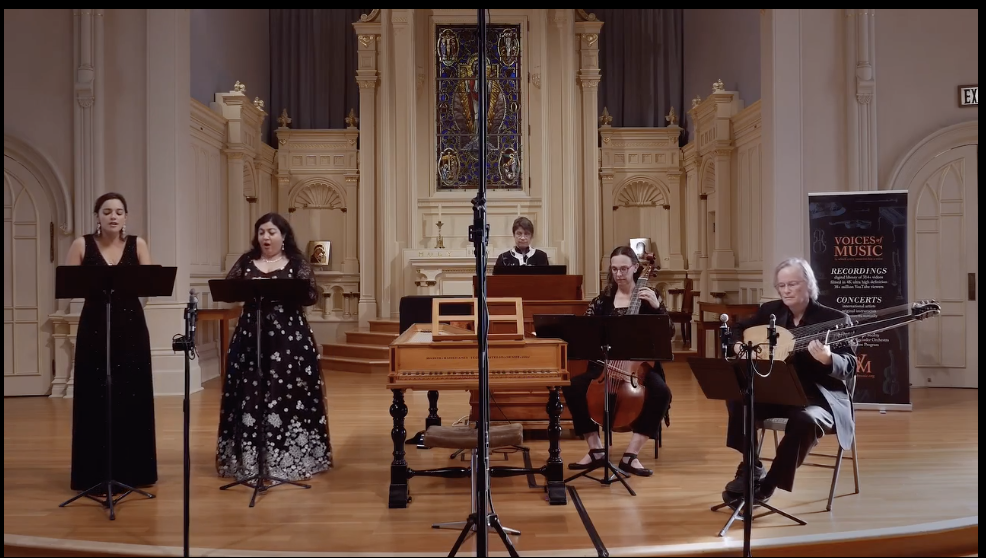Women Singing in public in Venice — when they weren’t supposed to.
In 1980 I spent a few weeks between sophomore and junior years backpacking around Europe. When I reached Venice my first goal was to see a concert at the famous La Fenice opera house, but that was closed for renovations. I also wanted to see the Accademia art museum, but on the one day I could go there, it was closed. I went to the Guggenheim, then spent the rest of the visit walking around, just soaking in the city. One evening I walked past a sign advertising a “Concerto delle donne” which was about to begin, so I bought a ticket and went in. The concert that I saw looked something like this:
The concert was chamber music, the players wore Renaissance dress, and told us the history (in English, luckily for me) of this kind of music. It all started with the Duke of Ferrara in the 1500s. He hired women of noble birth to sing and play music. His musically oriented wife participated. Women weren’t supposed to sing or perform music in public. For example, in Monteverdi’s choir at the Basilica di San Marco in Venice a few years later, boys or castrati sang the soprano parts. The Duke’s concerts of singing women were considered private, and therefore acceptable, even though the singers were provided with living spaces, a salary, and when they married, a dowry.
Concerto delle Donne took off. Imitation groups sprang up in other courts. Ferrara’s group was disbanded when he died without an heir in 1597, but the concept of women singing lived on in organizations like the Ospedale della Pietá in Venice, which is still known to us today because Vivaldi managed it later on.
I kept the program for that first Concerto delle donne. I did get to go back to Venice later and toured La Fenice, saw an opera there, visited the Accademia. But nothing impressed me as much as that first concert. It was the first inspiration for my first novel, which was initially published by a small traditional press that has since gone out of business. I’ve revised and retitled it as Trees Long for Rain. The hero is a young orphan girl trained at the Ospedale della Pietá (before Vivaldi) who dreams of singing with Monteverdi’s choir, even though girls are not allowed. Coming soon!

